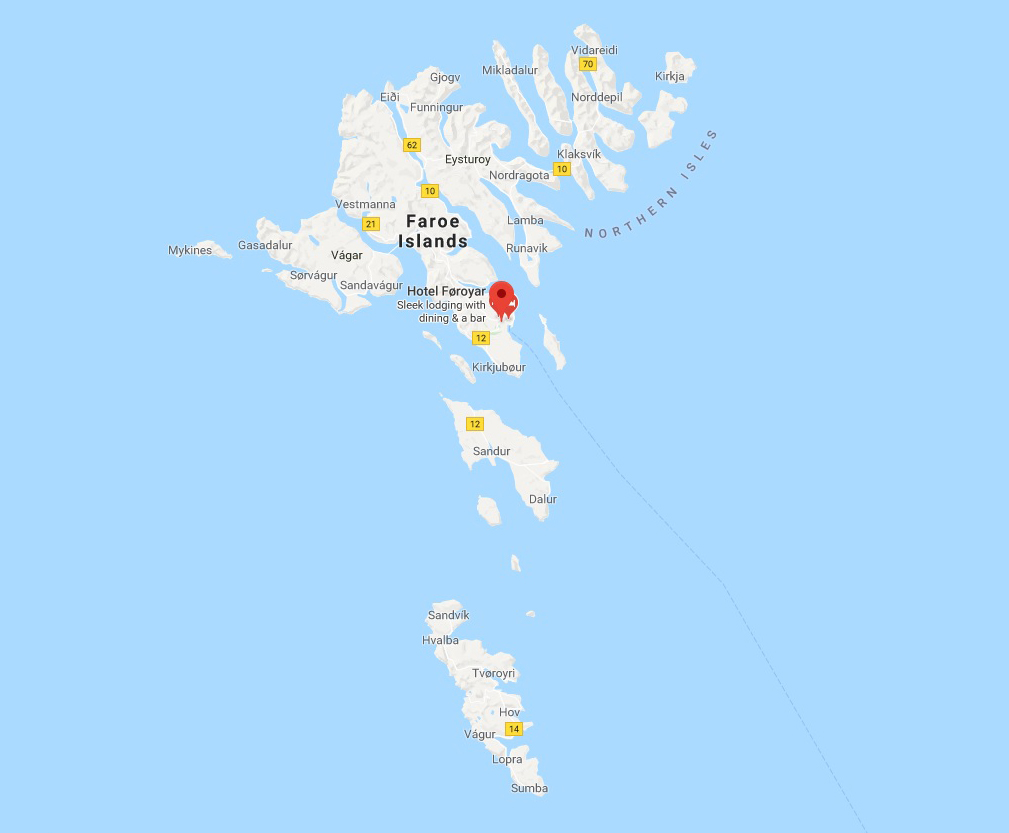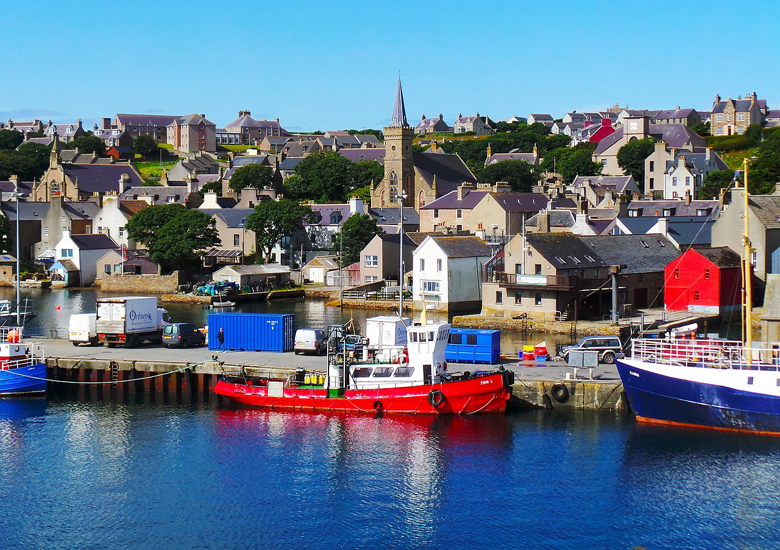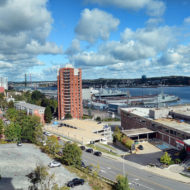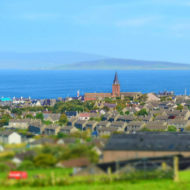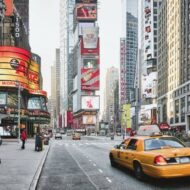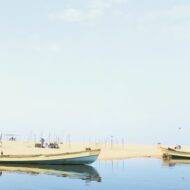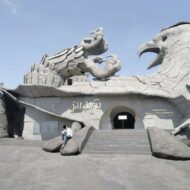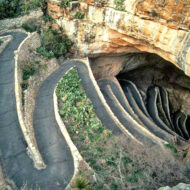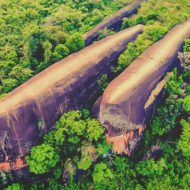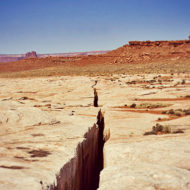The Orkney Islands are an archipelago of over 70 islands some 10 miles (16 km) off the northern tip of Scotland – United Kingdom.
They’ve been settled since the Neolithic period, and a remarkable collection of standing stones, early settlements and burial cairns remain, with the area listed on the UNESCO World Heritage List. Orkney came under Norse rule from the 9th C, and only in 1472 did it become part of Scotland, so its culture was never Gaelic. Its soil, climate and scenery are also different: it lies on red sandstone, so it’s mostly fertile, low-lying and green, with cows grazing and a shimmer of blue from the many lochs and sea inlets. It doesn’t draw the clouds, rain and midges of Highland Scotland. The largest island Mainland, together with Hoy and the chain of small islands down to South Ronaldsay, enclose Scapa Flow, which in wartime was an important naval anchorage.
Islands, towns and villages : Mainland is Orkney’s largest island, where 80% of the population resides. (To avoid ambiguity, on this and related pages the term Mainland, cap “M”, refers to this island, while the landmass of Great Britain to the south is referred to as the Scottish mainland, small “m”.) The chief settlements on Mainland are:
- Kirkwall is the administrative capital of the Orkney Islands and largest town. The airport, and ferry port for Aberdeen and Shetland, are here; it has the most accommodation and is the obvious base for visitors. Its main attractions are St Magnus cathedral, the Earl’s and Bishop’s Palaces, a couple of museums, and two distilleries.
- Stromness is the second-largest town, and the most attractive, with its narrow flagged main street. The ferry from Scrabster on the Scottish mainland lands here.
- Stenness is a small village on the main road between Kirkwall and Stromness. Around it is an outstanding collection of prehistoric sites: Maeshowe burial cairn, the Stones of Stenness, and the Ring of Brodgar are all within walking distance. A few miles further north is the Neolithic settlement of Skara Brae.
- Birsay is a small village on the north coast of Mainland. Its sights are the Earl’s Palace, and Brough of Birsay which is a tidal island with prehistoric remains.
Other small settlements include Finstown on the main road between Kirkwall & Stromness. This is the turn-off for Tingwall (ferry for Rousay, Egilsay & Wyre), and eventually the road winds round the north coast to Birsay; Houton south of Stromness is the ferry terminal for Lyness in Hoy, and for Flotta; and Deerness the eastern promontory of Mainland is farmland riven by the sea-chasm of The Gloup.
The “Barrier” islands: during the Second World War, the “Churchill Barriers” were built between Mainland and four small islands just south, to prevent seaborne attacks on Scapa Flow. So these are now linked by a good road, and for all practical purposes are part of Mainland. Approaching from Kirkwall north to south these are: - Lamb Holm, small and uninhabited, is the site of the 1 Italian Chapel. It was built 1943-45 by Italian prisoners of war who were constructing the Churchill Barriers. It was cobbled together from two Nissen huts and any bits and pieces the Italians could scrape up, and ornately decorated. Mass is still held here, the first Sunday of the month April to September. Open daily 09:00-18:30, free.
- Glims Holm is also small and uninhabited, just a few sheep. On the causeway to the next island, note the remains of “blockships” – the first attempt to close the eastern channels into Scapa Flow. These sufficed for World War 1 but proved inadequate at the outset of World War 2, when HMS Royal Oak was sunk with the loss of 833 lives.
- Burray has a small village. Its main visitor attraction is fossil-hunting along its red sandstone shoreline. Like Lamb Holm, it had a camp for Italian POWs and a chapel, but nothing of this remains.
- South Ronaldsay has the village of St Margaret’s Hope (ferry from Gill’s Bay), and Burwick harbour (ferry from John O’Groats). The Tomb of the Eagle is a neolithic burial cairn with human and bird bones.
The other islands, linked by ferry, are:
7 Shapinsay is the closest island to Kirkwall, a short ferry-ride north. Its main attraction Balfour Castle is closed, but there’s a well-preserved broch.
8 Hoy to the southwest is the second largest island. “Hoy” means high, and it feels more Hebridean than Orcadian: upland heath with poor soil, clouds and drizzle. Its main sight is the sea-stack “Old Man of Hoy”, with a hike through the RSPB Nature Reserve to view it. The main village is Lyness. The island of South Walls (main settlement Longhope) is linked by a roadway to Hoy.
Graemsay is a farmland island just north of Hoy: the Stromness-Hoy ferry calls here. There’s no transport to the uninhabited little islands of Cava and Fara.
9 Flotta just east of Hoy is dominated by an oil terminal.
Just north of Mainland, 10 Rousay has a large concentration of archaeological sites. The ferry runs here from Tingwall and also calls at 11 Egilsay where Earl Magnus was martyred, and 12 Wyre. There’s no transport to Gairsay.
The North Isles are quiet places for walks and bird watching. These are 13 Stronsay, 14 Sanday aptly named for its fine sandy beaches, 15 Eday, 16 Westray, 17 Papa Westray, home to the oldest site in Orkney, Knap of Howar; and finally the waves crash against 18 North Ronaldsay with its lighthouse.
The Orkneys do not include Fair Isle, which is considered part of Shetland. Nor do they include Stroma and Muckle Skerry, the two uninhabited islands seen to the south from South Ronaldsay. These are considered part of the Highland Region of the Scottish mainland and have no transport. The Orkneys do include uninhabited Swona, seen to the west from South Ronaldsay, but no, there’s no transport there either
Access : Coordinates: 59, -3.033333 / By plane : Loganair fly to 1 Kirkwall Airport (KOI IATA) on Orkney Mainland from Edinburgh, Glasgow, Inverness, Aberdeen and from Sumburgh and Fair Isle in the Shetlands. Fares include a 20 kg checked-baggage allowance. In summer there are several flights a day so day-trips either way are possible. The aircraft are medium-sized twin-props, eg the Saab 340. In addition there are short-hop inter-island flights.
Kirkwall Airport is five miles south-east of town on the A960. There are separate check-in areas for Scottish mainland and for inter-island flights, and a cafe. There’s a car-hire desk, booking is essential as they have a limited fleet and will need to fetch your car from town. Stagecoach bus #4 runs between the airport and Kirkwall bus station every 30 min M-Sa, hourly Su, taking 10-15 min. It runs Su-F 06:15-19:15, Sa till 16:15 when the last flight comes in. An occasional bus #3 from Kirkwall to Deerness also calls at the airport. Parking is free for pick-up & drop off but charges apply after 2 hours. Six taxi firms ply to the airport, listed in “Get around”. There’s often one waiting, otherwise phone from Arrivals
By boat : The Scrabster to Stromness car ferry, operated by Northlink, makes the 90-minute crossing daily. It sails three times a day in peak periods (mid-May to Aug, plus selected weekends), and twice a day the rest of the year. Scrabster on the Scottish mainland is a couple of miles north of Thurso, the most northerly railway station in Britain. Stromness is a 20 min drive to Kirkwall, frequent buses.
The Aberdeen to Shetland car ferry, also operated by Northlink, sails every night year-round, calling at Kirkwall on several nights. Northbound it leaves Aberdeen at 17:00 (April-Oct Tu Th Sa Su, Nov-March Th Sa Su not Tu), reaching Kirkwall (Hatston Terminal) at 23:00 before sailing on to Lerwick for 07:30 next morning. Southbound the ferry leaves Lerwick at 17:30 (April-Oct M W F, Nov-March W & F not M), similarly reaching Kirkwall at 23:00 before sailing on to Aberdeen for 07:00 next morning. On evenings when it’s not calling at Kirkwall, the ferry leaves Aberdeen or Lerwick later. See Shetland and Kirkwall pages for practical info and advice on this ferry.
The Gill’s Bay to St Margaret’s Hope car ferry, operated by Pentland Ferries, runs three times every day, and takes an hour. Gill’s Bay is on the Scottish mainland on the A836 five miles west of John O’Groats. St Margaret’s Hope is a 30 min drive to Kirkwall, bus every hour or so.
The John O’Groats to Burwick ferry, for foot passengers and cyclists only, is operated by Jogferry. It takes only 40 mins and runs May-Sept, three times a day June July & Aug and twice daily in May and Sept; no winter service. On the Scottish mainland, June-Aug a connecting coach runs between Inverness and John O’Groats. (No dogs or bikes on this coach, they’re welcome on the ferry.) On Orkney a connecting coach runs between Burwick and Kirkwall: the X1 bus to South Ronaldsay doesn’t run as far south as Burwick.
Cruise ships often visit the Orkneys. They either berth at Kirkwall Hatston Terminal, with a shuttle-bus to town, or anchor out in the bay with tenders bringing passengers ashore. The main tourist attractions get mobbed when they arrive
Highlights :
- Prehistoric Orkney: these islands have an amazing collection of well-preserved prehistoric remains. The finest and most extensive are Neolithic or New Stone Age, dating to around 3000 BC. That makes them 5000 years old, older than the Pyramids of Giza, and among the oldest human structures known. They’re recognised as World Heritage sites by UNESCO, the pick of them being the Heart of Neolithic Orkney collection around Stenness. There’s less from the Iron Age and Pictish Age. Prehistory in this region shades into history sometime in the first millennium AD, when Viking sagas began to describe local places, rulers and battles.
- And lots and lots of people naturally want to see them. The standing stones can absorb the crowds and if you just wait aside for 20 mins, the tour bus will depart and you can enjoy the lull before the next group. But in the underground chambers it doesn’t take many to cause congestion, and at Maeshowe they’ve had to limit access; it can be booked out for days ahead. There’s no need for this because there are so many other high-quality sites, more than a single trip to the Orkneys could encompass, and those off the “circuit” are seldom visited. So spread out and enjoy. Most of them are free to enter, any time of day or night; pre-view them on Historic Environment Scotland website. Most of them just have a signpost and a grassy path leading to a hole in the hillside; the lesser-known just have the hole. If it’s been raining you’ll get filthy, but you’ll really feel like an explorer as you crawl inside – although Lord Carnarvon and Indiana Jones didn’t have smartphones to use as flashlights.
- The principal sites are: At Stenness is Maeshowe, Stones of Stenness and Ring of Brodgar, with Skara Brae a few miles north.
Birsay has the Brough (plus later Palace and Skaill House).
The island of Rousay has Midhowe Broch and Cairn, and Yarso.
Less touristy sites near Kirkwall include the Cairns of Wideford Hill and Cuween Hill.
South Ronaldsay has the Tomb of the Eagles.
Activities : Diving: In November 1918 when Germany surrendered at the end of World War I, the German Imperial Fleet was disarmed and brought to Scapa Flow. Peace negotiations dragged on, the captured crews became mutinous, and by the following summer their Admiral Reuter became convinced the British would seize the ships for their own military use. He therefore had the entire fleet of 74 warships scuttled: the greatest mass sinking in history. The British managed to rescue several ships and others were later salvaged, but most remain. Seven are routinely visited by divers: battleships Konig, Kronprinz Wilhelm and Markgraf, and cruisers Brummer, Coln, Dresden and Carlsruhe. Being top-heavy with armour the ships sank upside down, and have been down there for 99 years and are now fragile – dive with care. They’re beyond the range of novice divers, and far too deep for snorkelers, but there are plenty of shallower dive sites, eg the “blockships” along the Churchill Barriers.
Events : Orkney Folk Festival is held annually in May; the next is 23-26 May 2019. Mostly held in Stromness but various other venues.
St Magnus Festival includes music, theatre and literature. It’s held for a week in midsummer, dates and programme for 2019 are not yet announced. Mostly held in Kirkwall but various venues around the Orkneys.
Orkney Science Festival: the physics of mountain rescues, the mathematics of Bach, and how to use hydrogen for transport, are among the programme for the forthcoming event Thurs 6 to Wed 12 Sept 2018. Mostly held in Kirkwal
Go next : Either continue north to Shetland, or return south to the Scottish mainland.


